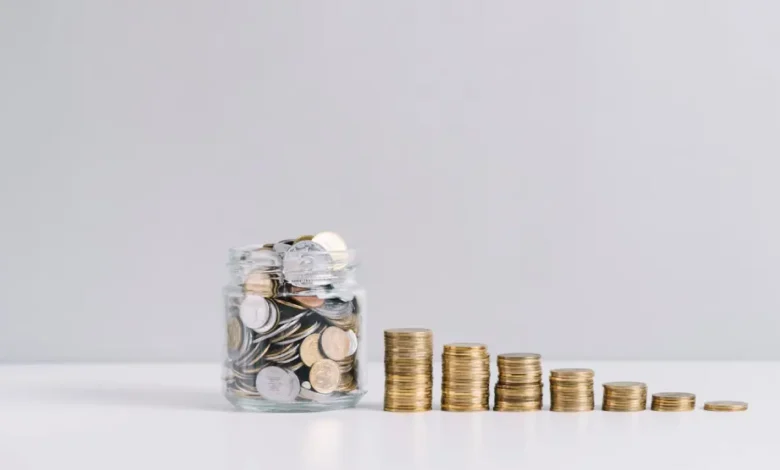Emergency Fund Tips: Why You Need One and How to Build It
Financial uncertainty can hit anyone, anytime – be it a sudden job loss, an unexpected medical expense or an urgent home repair. In these scenarios, having an emergency fund is not just beneficial; it’s essential. Welcome to our blog post titled “Emergency Fund Tips: Why You Need One and How to Build It”. This insightful guide will underscore the crucial role of emergency funds in maintaining financial stability during turbulent times and how you can build one with ease.
Whether you’re new to personal finance management or looking for ways to bolster your existing safety net, this write-up contains practical tips that are sure to help. Read on as we unravel what many consider a cornerstone of sound financial planning creating and managing your very own emergency fund! Don’t let life’s unpredictability catch you off guard; equip yourself with the knowledge needed today!

Understanding the Importance of an Emergency Fund
In times of unexpected financial crises, having an emergency fund can provide a crucial safety net. Understanding the importance of an emergency fund is essential for financial security. This fund serves as a buffer to cover urgent expenses like medical bills, car repairs, or sudden job loss, without having to rely on high-interest loans or credit cards.
Building an emergency fund requires discipline and consistency in setting aside a portion of income for unforeseen circumstances. Having this financial cushion not only offers peace of mind but also helps avoid falling into debt traps during emergencies. By prioritizing the creation of an emergency fund, individuals can better navigate unexpected financial challenges and maintain stability in their financial well-being.
Steps to Create Your Own Emergency Fund
Creating an emergency fund is a crucial step in building financial security and peace of mind. Here are the steps to help you create your emergency fund:
1. Set a Goal: Determine how much money you want to save in your emergency fund. Financial experts recommend saving three to six months’ worth of living expenses but start with a realistic goal that works for you.
2. Track Your Expenses: Take a close look at your monthly expenses to understand how much you typically spend. This will help you determine how much you need to save for your emergency fund.
3. Choose a Savings Account: Open a separate savings account specifically for your emergency fund. Look for an account with a high-interest rate so your money can grow over time.
4. Automate Your Savings: Set up automatic transfers from your checking account to your emergency fund savings account. This way, you’re consistently saving money without having to think about it.
5. Cut Expenses and Increase Income: Look for ways to cut unnecessary expenses in your budget and consider finding ways to increase your income, such as taking on a side job or freelancing.
6. Build Your Fund Over Time: Saving for an emergency fund is a gradual process. Make regular contributions, even if they’re small, and watch your fund grow over time.
By following these steps and staying committed to your goal, you can create an emergency fund that provides a financial safety net for unexpected expenses or emergencies.
Tips on Saving Money for Your Emergency Account
Building an emergency fund is crucial for financial stability and peace of mind. Here are some tips on how to save money for your emergency account:
1. Set a realistic savings goal: Start by determining how much you need to cover three to six months’ worth of living expenses. This can vary depending on your circumstances, but having this target in mind will help you stay focused.
2. Create a budget: Track your income and expenses to identify areas where you can cut back. Look for non-essential items that you can reduce or eliminate to free up more money for your emergency fund.
3. Automate your savings: Set up automatic transfers from your checking account to your emergency fund to ensure consistent contributions. Treat this like a regular bill payment to make saving a priority.
4. Save windfalls and bonuses: Instead of splurging when you receive unexpected money, consider directing it towards your emergency fund.
This can include tax refunds, work bonuses, or cash gifts.
5. Cut unnecessary expenses: Review your monthly bills and subscriptions to identify areas where you can save. Consider cancelling or downgrading services that you don’t fully utilize.
6. Increase your income: Look for opportunities to boost your earnings, such as taking on a side hustle or freelancing gig. Allocate the extra income towards your emergency fund to expedite its growth.
By following these tips and staying committed to your savings goals, you can build a strong emergency fund that provides a financial safety net during unexpected circumstances. Remember, consistency is key, so stay disciplined and prioritize saving for your future financial security.
How Much Should Be in Your Emergency Fund?
When determining how much should be in your emergency fund, it’s recommended to aim for 3 to 6 months’ worth of living expenses. This range provides a buffer to cover unforeseen expenses such as medical emergencies, job loss, or car repairs without dipping into your savings or going into debt.
To calculate your specific emergency fund goal, add up essential monthly expenses like rent or mortgage payments, utilities, groceries, and insurance premiums.
Consider factors like your job stability, dependents, and health when deciding on the amount. While building an emergency fund can take time and discipline, having this financial safety net in place can provide peace of mind and security during unexpected setbacks.
Maintaining and Growing your Emergency Funds
Maintaining and growing your emergency fund is essential for financial security. Continuously contribute to your fund, even if it’s just a small amount each month, to ensure it remains robust. Reevaluate your budget regularly to identify areas where you can cut back and redirect the savings into your emergency fund. Consider automating contributions to make it easier to stick to your savings goals.
Keep your emergency fund in a separate account, such as a high-yield savings account, to prevent it from being spent on non-emergencies. As your financial situation improves, strive to increase the size of your emergency fund to cover at least three to six months’ worth of expenses.










